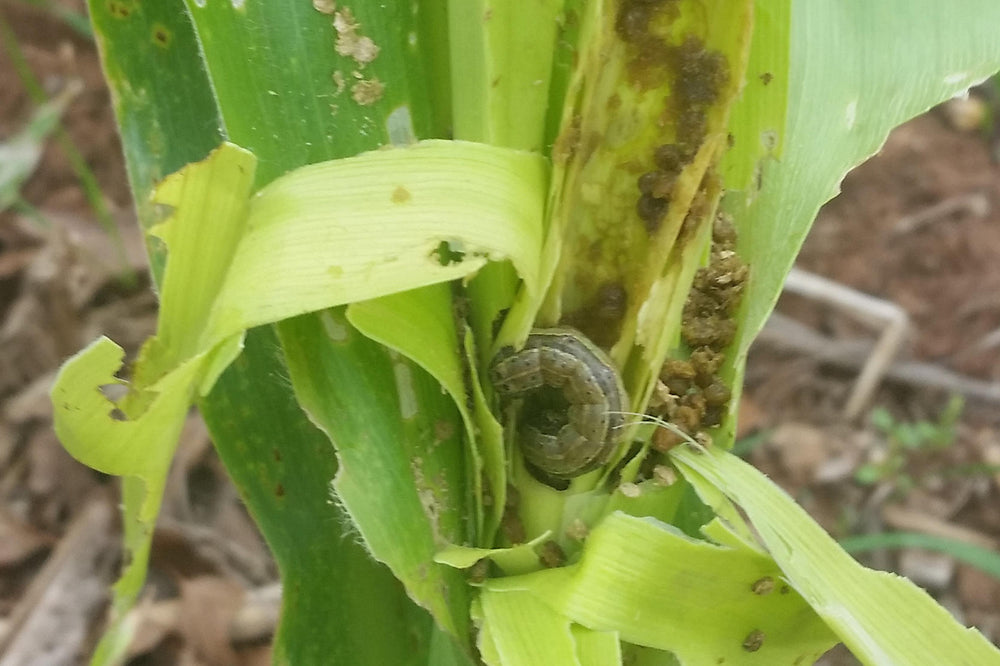Fall army worm

Larvae of Fall armyworm larvae pose most danger to sweetcorn and maize.
They also eat several hundred other plant species. The Fall Army Worm harms crops by feeding on them its larval stages, causing widespread damage.
They are the larval stage of the Spodoptera frugiperda moth. This is different to the Spodoptera litura or Tropical armyworm, which is already found in NZ.
The moth does well in hot countries, but isn't likely to hibernate successfully in NZ. I.e. if we are lucky it will die off over winter.
You can find the pale yellow eggs on the lower surface of leaves in clusters of of 100-200. They are usully covered with scales that feel like felt.
Larvae of small fall armyworm are generally brown or light green. Their head is dark. You will find the young larvae munching on the top of the leaf.
Fall armyworms get darker as the grow, reaching 3-4 cm long. They've got two dark spots & spines on top, and four black spots in a square on their abdomina pale whiteish strip along the length of the body. Between their eyes you can see an upside down Y shape.
They usullay pupate in the ground. Look for shiny bound pupae somewhere between 1.35 and 1.7cm long.
Wingtip to wingtip adult moths measure about 3cm - 4cm. Male moths are smaller than females. Both have a a dark-brown edge around their white hindwing. Female moths are less patterned, unlike the male moths whose forewing have white triange shaped spots at the tip and middle. They are strong flyers and travel hundreds of kms with storms.

